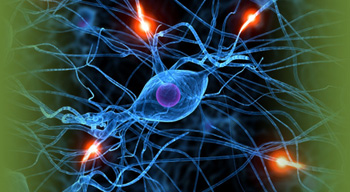June 1, 2009
Low Dose Naltrexone: The Next Miracle Drug?

By Michael D. Shaw
Naltrexone is the generic name for a drug, approved by the FDA in 1984, used to treat alcohol and opioid addiction. Opioids are generally pain-management agents such as morphine, codeine, oxycodone, and fentanyl. Opioids also include heroin and methadone, as well as our own naturally occurring endorphins.
Endorphins are a type of neurotransmitter, released when we are subject to pain or stress, which have the effect of reducing these sensations. More than that, endorphins promote modulation of the appetite, release of sex hormones, feelings of euphoria, and enhancement of immune response. Some foods—such as chili peppers (the hotter the better) and chocolate—are said to promote endorphin release. Acupuncture, sex, massage, and exercise have also been shown to activate endorphin release.
Naltrexone is an opiate receptor antagonist; that is, it blocks cellular opiate receptors. As such, it removes the pleasurable feelings associated with alcohol and opioid abuse. In fact, the drug does such a good job of blocking the receptors that many heroin addicts would stop taking naltrexone, since it simply made them feel terrible all the time. As such, methadone became the drug of choice in the treatment of heroin addiction.
Neurologist Bernard Bihari MD, who at the time was treating heroin addicts with naltrexone, discovered that a substantial number of them—who also suffered from AIDS—had extremely low levels of endorphins. He postulated that this may have been the reason they turned to heroin in the first place. While opioid (and thus endorphin) receptors are found throughout the body, they are especially prevalent on immune system related cells.
Since many diseases stem from some sort of immune dysfunction, Bihari wondered if low endorphin levels were a factor. In 1985, Bihari discovered that a low dose of naltrexone (LDN) blocks the endorphin receptors for only about an hour, the net result being that the body responds by secreting much more of the endorphins—often by a factor of five.
Within a few years, he was seeing the therapeutic benefits of LDN in patients with such varied conditions as lymphoma, lupus, and pancreatic cancer. But, as good as these results seemed to be, they were not observed in a controlled clinical study.
The first study of LDN published in a US-based medical journal would come in 2007, with Dr. Jill Smith’s article in the American Journal of Gastroenterology entitled “Low-dose naltrexone therapy improves active Crohn’s disease” (e-published in January, print published in April). Smith and her team found that 67% of the patients went into remission and fully 89% showed some therapeutic benefit. This encouraging work led to an NIH grant and a Phase II placebo-controlled clinical trial, currently in progress.
In September, 2008, results were published for a Phase II clinical trial in Italy in which LDN was used to combat multiple sclerosis (MS). Again, the results were highly promising. Since MS is thought to result from an autoimmune process whereby T cells mistake myelin—the coating around nerve cell fibers in the brain and spinal chord—for a foreign invader and attack it, many assumed that MS was the consequence of an overactive immune response. These results, though, would argue against that theory.
In 2007, Burton Berkson MD, PhD and associates published an article in Integrative Cancer Therapies entitled “Reversal of signs and symptoms of a B-cell lymphoma in a patient using only low-dose naltrexone.” Berkson’s 2006 article in the same journal entitled “The long-term survival of a patient with pancreatic cancer with metastases to the liver after treatment with the intravenous alpha-lipoic acid/low-dose naltrexone protocol” described the incredible turnaround of a patient previously diagnosed as terminal in 2002.
LDN is inexpensive with virtually no harmful side effects. However, since it is no longer a proprietary drug, the pace of rolling out clinical trials for the off-label effects described in this article will probably be slow, as will its acceptance by mainstream medicine. Still, there is nothing to prevent a patient from taking an FDA approved drug for an off-label indication, and this practice goes on all the time.
Certainly, there is much appeal in a naturally-acting immune modulator that is cheap and effective. We await the publication of further results.

